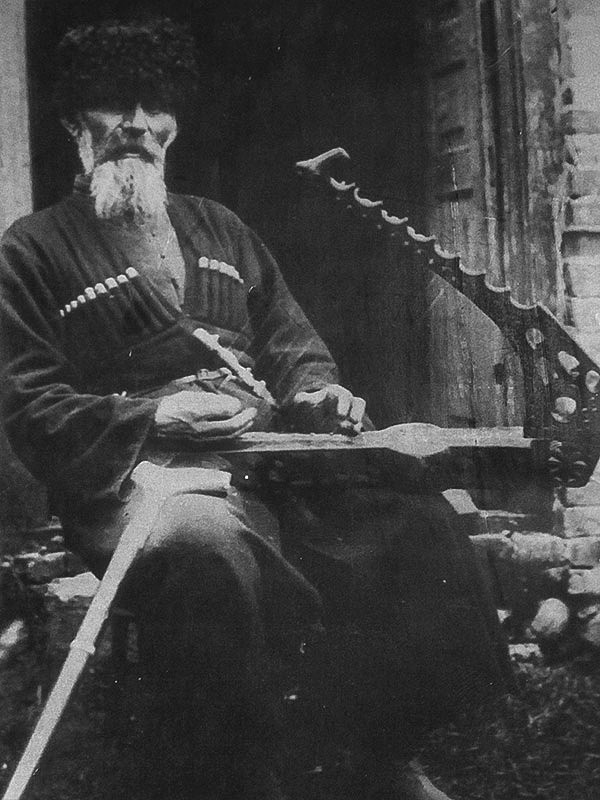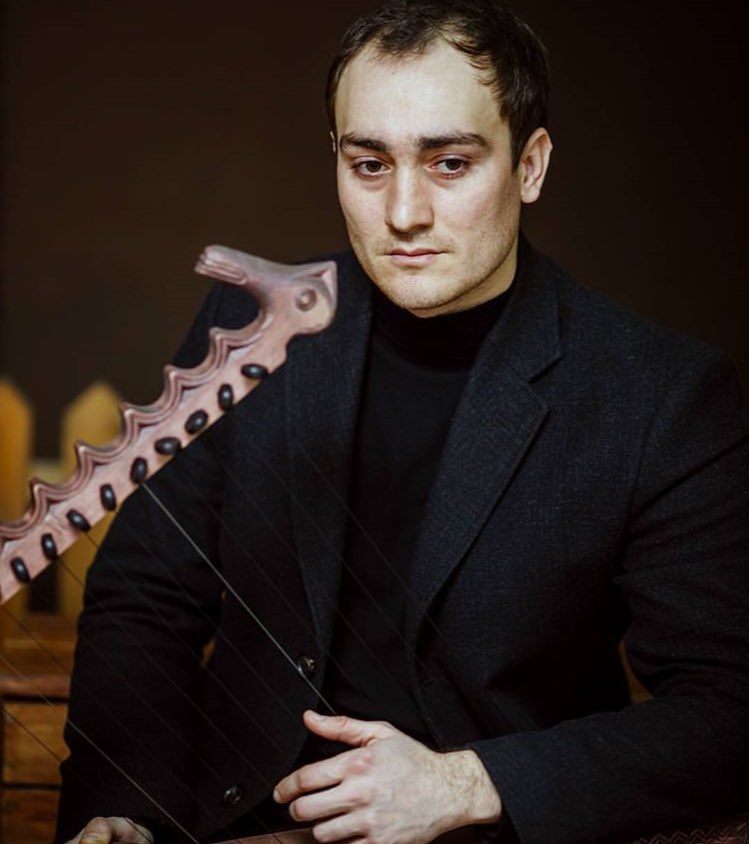The Republic of North Ossetia – Alania is a small mountainous federal subject of Russia. It is the heart of the Caucasus, and surrounded by majestic snow ridges. Since ancient times, the Ossetian people have carried their precious national culture through the centuries.
Musical folklore here is rich in its indescribable songs, tales and legends. The national musical instruments of the Ossetians play an important role in the spiritual culture of the people. Today we will discuss with pride, from North Ossetia, the wonderful instrument of Duadastanon.

Duadastanon (stress on the last syllable) or Alano-Ossetian harp is one of the oldest musical instruments in the North Caucasus. This is a type of corner harp, the original stringed instrument of the ancient Alans (Ossetians).
The design of the instrument is simple: a small flat box-resonator, a little more than half a meter in length and an arched neck with 12 pegs for tuning strings, which were made of horsehair; now synthetic nylon strings are used. 8 strings are treble and 4 are bass. The shorter the string, the higher the sound, as is the case rwith all strings. They are diatonic.

The strange and cumbersome name of this Ossetian harp literally translates as “twelve strings”. Duyuadas – 12, tan – a string, which surprisingly resonates with the Latin duodecim – 12 and tangite – strings.
Traditionally, the body of the instrument is carved out from a single piece of wood, most often well-dried maple. The neck and body are decorated with carvings and paintings. The end of the neck is cut in the form of a horse or bird’s head. Small resonator holes are drilled in the housing.
The ancient epic Tales of the Nart of the Alans tells about the appearance of duadastanon in a tragic story about how the mythological Syrdon, struck by the death of his 12 sons and wife, made Twelve strings from the lives of his cruelly murdered sons and pulled them onto the hand of his eldest son. So he got a sad harp-fandir. It was played by storytellers, the last of whom was Gakha Slanov.

When playing, the performer (only men played the duadastanon) pluck the strings with the fingers of both hands. Playing duadastanon is accompanied by the performance of Nart folk tales, love, lyric, and children’s songs.
In modern Ossetia, duadastanon, once present in every home, is almost forgotten. It is made by rare craftsmen – enthusiasts according to old drawings.
The first who began to restore Ossetian musical instruments was Soslan Mouraov, a man who devoted his life to this work. Subsequently, he taught this craft to other craftsmen. Among them, Timur Ilaev who is an opera singer, and a master of making national instruments. Thanks to the preserved photographs and drawings, Timur restored duadastanon, working tirelessly for almost two years. It turned out to be an exact copy.

Timur also has his own student: Alla Tauchelova. Wishing to introduce young people to the history of her people’s culture, she teaches everyone to play one more ancient three-stringed instrument – dalafandir, free of charge.
In the future, Alla plans to teach children to play the duadastanon.
“Few people play this instrument now,” she says. – “Its sound is old. This is a unique opportunity to plunge into the past and listen to the very sounds that filled the life of our ancestors.”
Regina Kumaritova,
translation by Ghada


